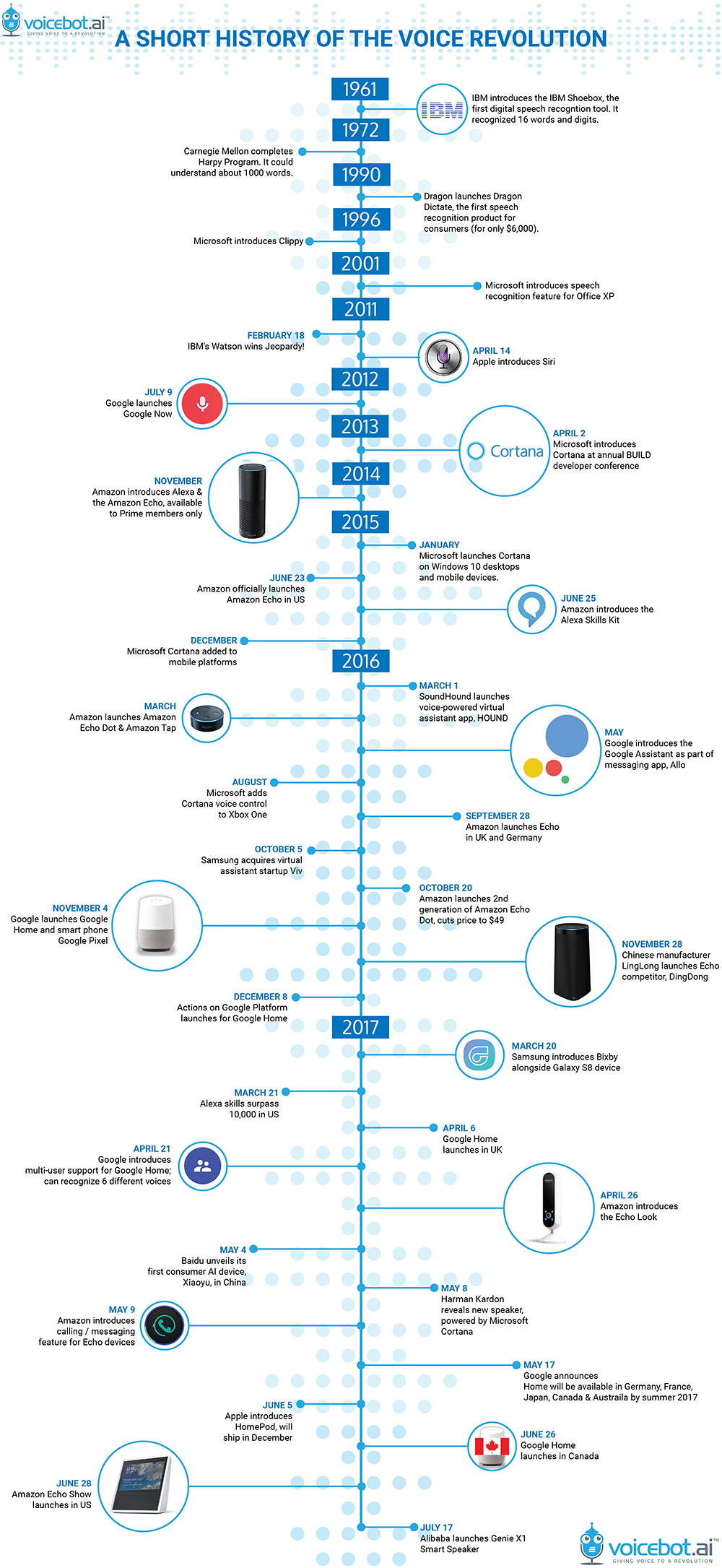It is universally understood that social media has reshaped the way brands interact with their consumers (Johansson, 2016). As marketers are now understanding how social media can be best utilized to establish rapport with their consumers and build brand sentiment, a new voice has been added to the mix (Prabhu, 2018). Since its introduction in 2014, Amazon’s Alexa and Amazon Echo have created a ripple effect in voice recognition technology (Mutchler, 2017) as Google and Apple try to keep up with their own technologies such as Google Home and Homepod (Williams, 2017). According to AdWeek (2018), 25% of shoppers utilized voice assistants during the 2017 holiday shopping season. So, what does this mean for brands and their marketing efforts?
According to AdAge (2018), 70 percent of voice searches include keywords that are different than keywords used during an online search. In addition, 60 percent of those searches are not particular to a brand, such as saying “Alexa, order me some chocolate” (Prahbu, 2018). When the search does not include a brand, these smart speakers present options based on an algorithm of past searches and purchases (Prahbu, 2018). While marketers should focus or making it to the top of that list of suggestions by listening to the slew of new words consumers are using to make their voice searches, brands should also be considering the voice they want to have when communicating through smart speaker technology (Olenski, 2018). This does, however, open up an opportunity for brands to connect with their consumers in a more natural way as voice comes more naturally to people and feels more conversational than social media (Olenski, 2018). As technology advances, brands have the opportunity to build their voice to communicate through artificial intelligence, although it seems as though brands who have already created the AI (Amazon’s Alexa) to communicate will be the literal voice of many brands looking to invest in this kind of marketing.
Many brands have already partnered with Amazon’s Alexa such as Johnnie Walker, however, the experience the brand is creating by pairing it with this technology goes beyond showing up in a search. This platform provides a new way for brands to interact with their consumers in the way that Johnnie Walker not only sells the product but provides a guided tasting as Alexa acts as an expert in not only the product but the brand itself (Williams, 2017). In order to stay competitive will brands have to partner with one of the three giants of smart speakers? Will it be enough in the future to have a small range of voice functions such as Domino’s voice-activated pizza ordering app (Williams, 2017)? How much power will Google, Apple, and Amazon yield as this becomes the new form of communication with consumers? Also, where is all this consumer data going and how is it being used? How as marketers, can we be sure to take advantage of this new pool of consumer data? While Google Home provides certain restrictions to maintain privacy, there is a substantial amount of new more authentic search data being provided to these three large companies monopolizing the smart home device market (Olenski, 2018). By selling this data to brands willing to invest in gaining insights about their consumers, organizations like Amazon may have tapped into a research goldmine (Treseder, 2018). To remain competitive, it is essential for marketers to stay informed and in tune with the new technologies and the opportunities they provide for brands to interact with their consumers more authentically (Treseder, 2018). As these technologies continue to be further integrated into our lives, market research to truly understand artificial intelligence’s influence on consumer purchasing behavior would be very insightful.
References
Johansson, A. (2016). How social media has changed the way that we engage consumers. Huffington Post. Retrieved from https://www.huffingtonpost.com/anna-johansson/how-social-media-has-changed-the-way-that-we-engage-consumers_b_9874242.html
Mutchler, A. (2017). Voice assistant timeline: A short history of the voice revolution. Voicebot.ai. Retrieved from https://voicebot.ai/2017/07/14/timeline-voice-assistants-short-history-voice-revolution/
Olenski, S. (2018). Is voice set to be the next big thing in marketing? Forbes. Retrieved from https://www.forbes.com/sites/steveolenski/2018/05/31/is-voice-set-to-be-the-next-big-thing-in-marketing/#7ffad0c37d5f
Prabhu, A. (2018). Top of mind to tip of tongue. Ad Age. Retrieved from https://adage.com/article/digital/top-mind-tip-tongue/315490/
Treseder, D. (2018). How marketing through voice technology will put savvy brands ahead of the curve. Ad Week. Retrieved from https://www.adweek.com/digital/how-marketing-through-voice-technology-will-put-savvy-brands-ahead-of-the-curve/
Williams, A. (2017). 8 brand using voice activation to boost brand engagement. CMO from IDG Communications. Retrieved from https://www.cmo.com.au/article/628066/8-brands-using-voice-activation-boost-brand-engagement/

3 Responses to Alexa, Google Home and Homepod: The New Voice of Consumers and Brands